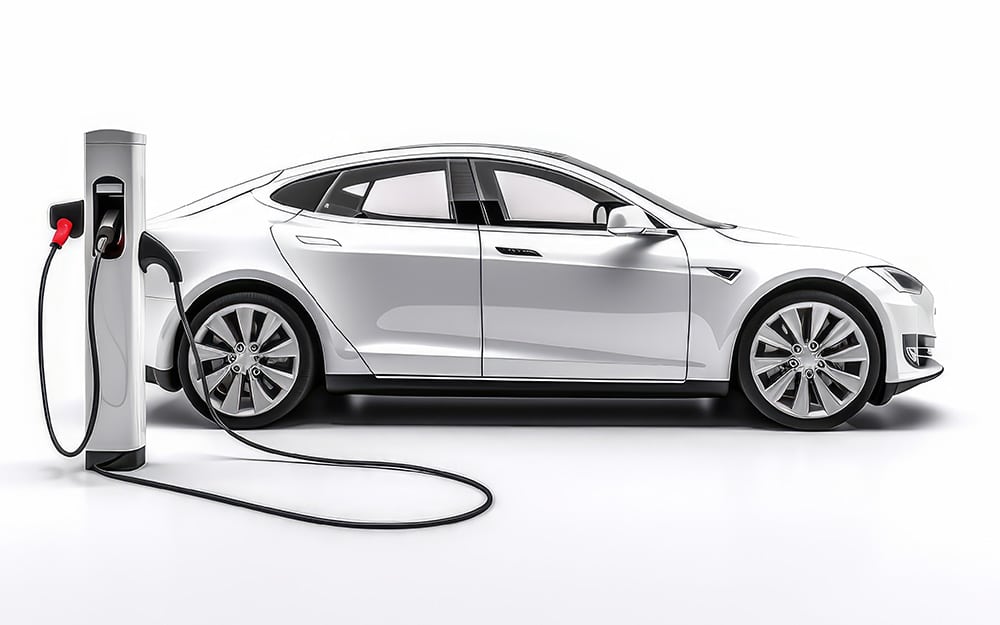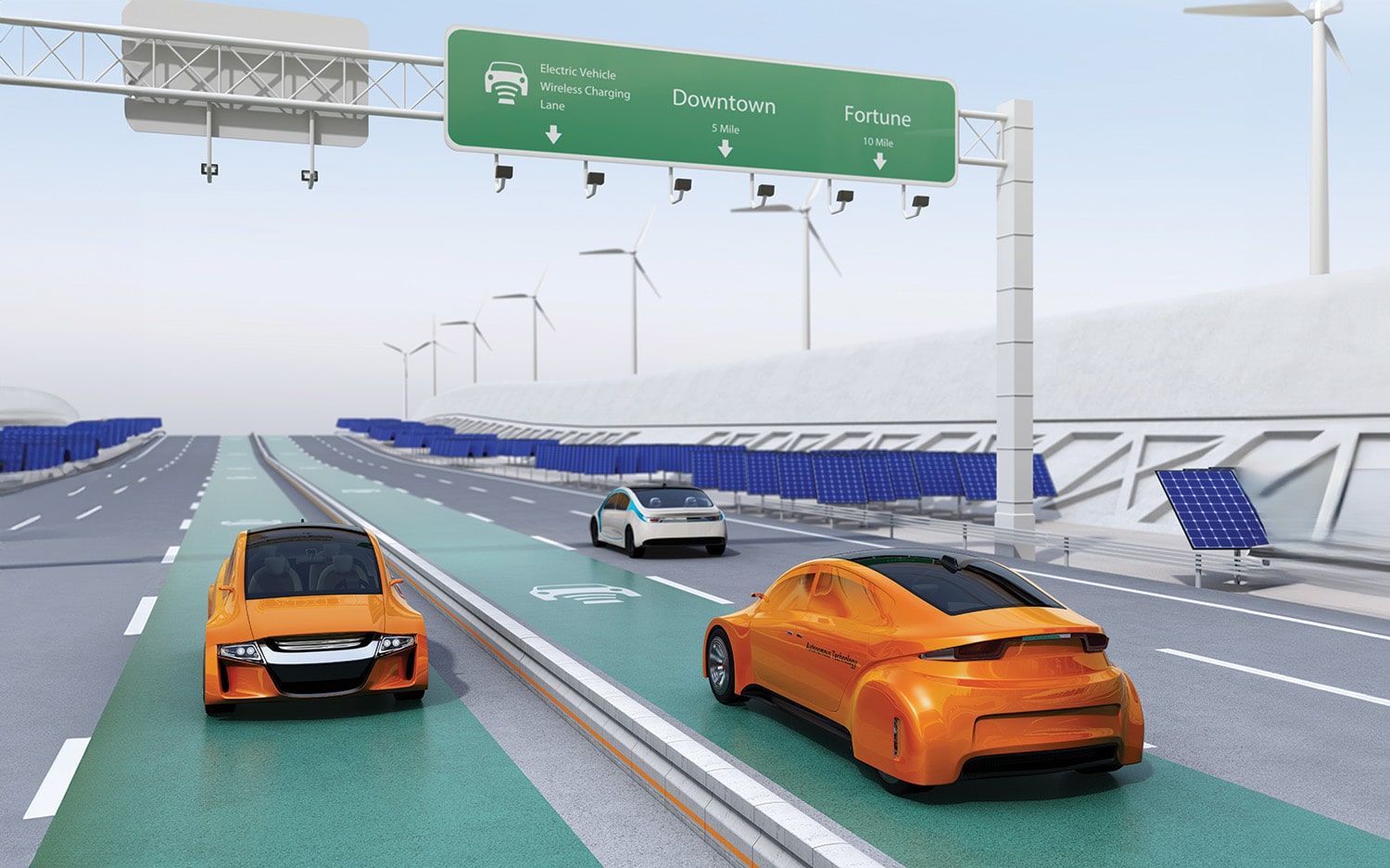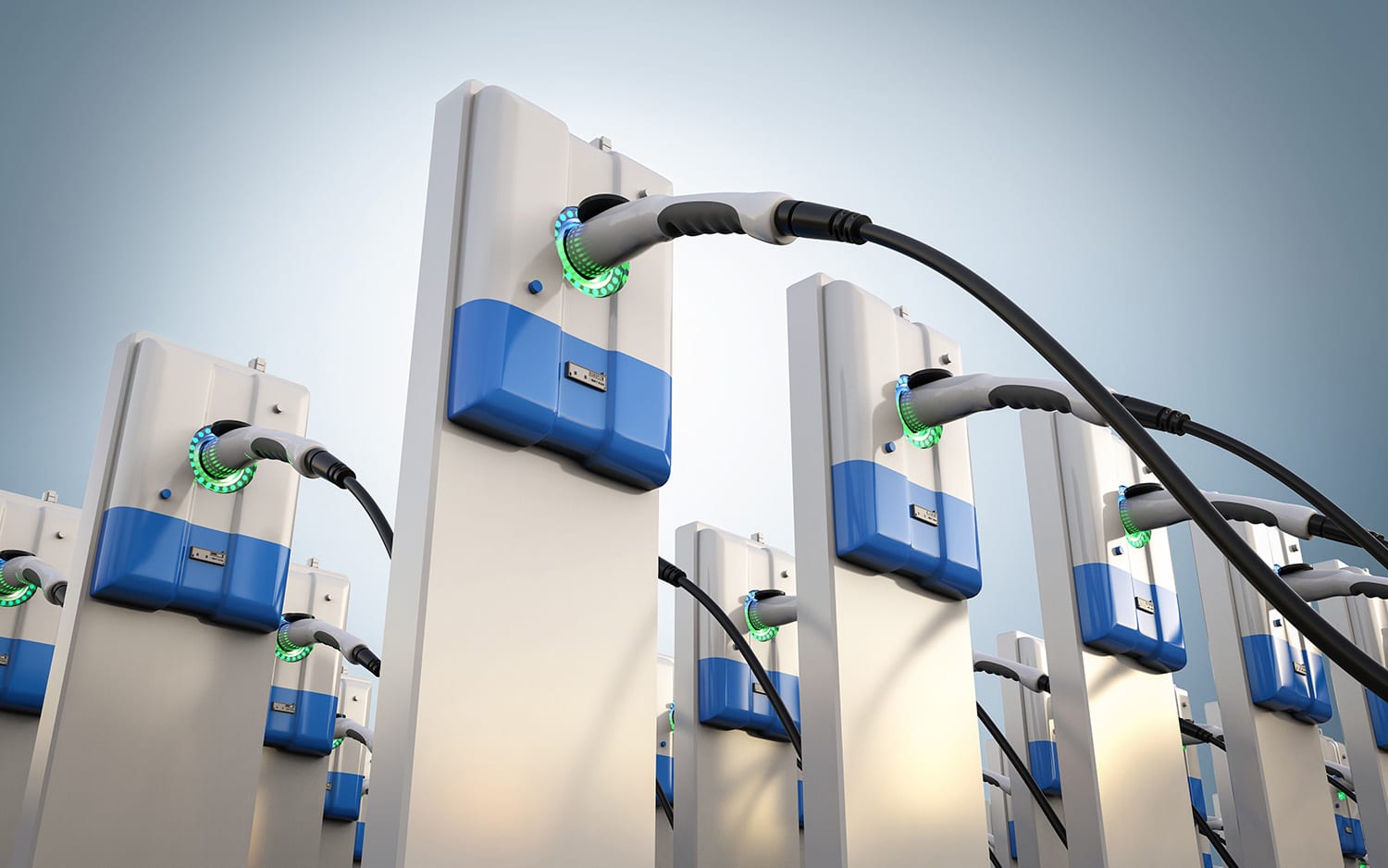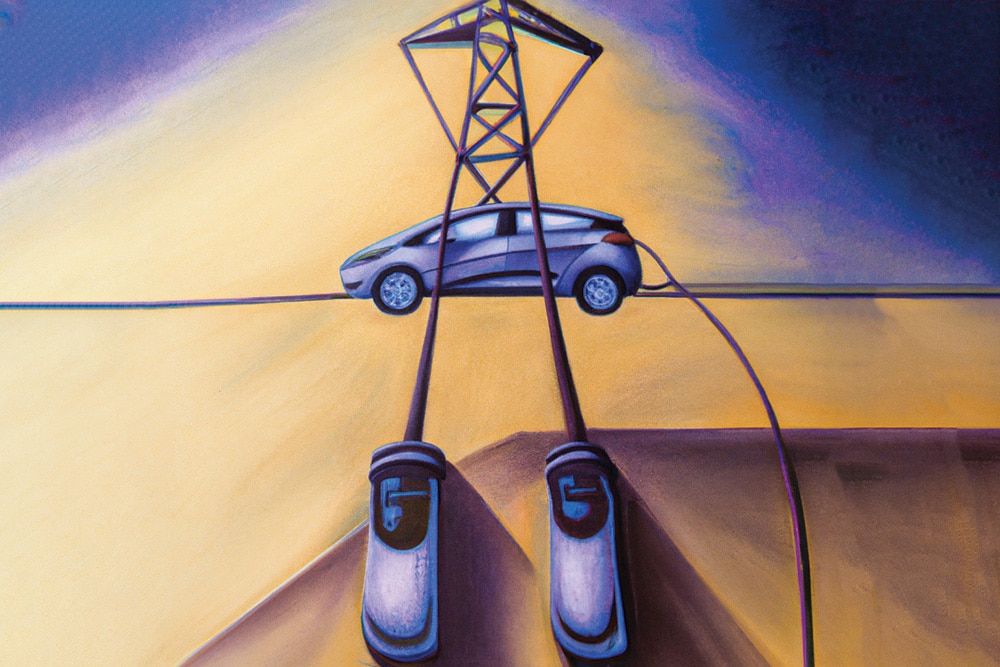
The Green Impact
The Grid May Be Ready to Grow Wheels
What Operators and Asset Owners Need to Know About Vehicle-to-Grid Technology
Most technological advancements require a shift in the consumer mindset. We are seeing that today with EVs: about four in five EV drivers charge their vehicles at home versus driving their vehicle to fueling infrastructure. But another shift is coming. Vehicle-to-grid (V2G) technology, which allows for bi-directional charging and discharging of energy from EVs, will teach us to look at personal vehicles through an entirely new lens. Our cars, although they reliably get us from point A to point B, have been solely a source of energy demand subject to changes in the commodity price of fuel. With conversations about V2G coming to fruition, there is an opportunity to start thinking about personal vehicles as mobile storage resources that can serve both the vehicle owner and provide critical grid services. A win-win, right?
For some background, vehicle-to-grid technology uses bi-directional capabilities of a capable electric vehicle and EV charging infrastructure to discharge energy back into the power grid, a building, or a home, which allows for the EV to be used for reliability, load-balancing, or as a peak load resource. However, there’s much to understand about our cities’ infrastructure, capabilities, and processes before we can make V2G a reality, but don’t get too discouraged—years ago there were many skeptics around electric vehicles and if they would ever become accessible to the non-ultra-wealthy. Now, look how far we’ve come—over 130 new EV models will be available for purchase in 2024.
Where are we on the V2G journey?
There are three clear stages that parking operators (and consumers) need to understand when categorizing the evolution of V2G.
The good news: we have practically completed the first phase. The “crawl phase” of transitioning EVs into highly dynamic resources happened when more consumers became comfortable with the thought of transitioning to greener, more efficient options. We are past the era of EV early adopters and now know that the future is electric.
Today, we are at what I like to call the “walk phase”—the most complex of the three. This phase is multi-faceted, but it starts with getting people to think about their personal vehicles as a dynamic charging resource. Parking operators and drivers need to think about how vehicles are charged, and when, as a critical strategy in affecting another entity (the grid); this is also where load management comes in. This starts with the uni-directional charging, V1G or managed charging for load control, where we develop the ability to control the load going into electric vehicles at enough scale to manage energy use at a site, help balance energy consumption with a large commercial building, or even reduce system peak.
Before getting to the bidirectional flow (V2G) of electricity, it’s a matter of controlling the load out on the energy grid in a way where vehicles become a grid-edge resource and provide demonstrable benefit to the grid. It all boils down to having a solid load management strategy in place, which is new territory for many parking operators.
Vehicle-to-grid (V2G) technology, which allows for bi-directional charging and discharging of energy from EVs, will teach us to look at personal vehicles through an entirely new lens.
Another key consideration within this walk phase is decentralizing consumer feelings around fueling habits, moving from a fuel-up-and-go culture to getting more comfortable charging publicly or even at home. Parking operators should take note of this shift and adapt accordingly by providing customers with spaces to charge, as it’s only going to become more necessary the closer we want to get to V2G. Once more people participate in charging, we can layer existing data on driving patterns and consumer profiles with charging data to provide reliable load management solutions at parking sites. This is a foundational step before moving to full integration of mobile and highly flexible battery resources in our energy infrastructure.
The phase of the future, the “run phase,” is where V2G becomes a reality. A select few light-duty vehicles have this capability and there are already some mechanisms in place in wholesale power markets that allow for V2G resources to participate directly. Once the technology becomes integrated into more light- and medium-duty vehicles, fleet operators and mass market consumers will need to think about their vehicles’ energy production as much as their consumption. I believe that shift can happen rapidly if parking operators are prepared to provide energy solutions that align with driving habits and consumer demand. Mass-market V2G solutions are the future and parking operators need to begin thinking about dynamic energy solutions at their facilities.
What should parking operators know?
Parking operators must understand how big of an opportunity this development will be for them. Operators are going to have to think about more complex energy issues, something they haven’t needed to prioritize before—not at this scale.
First, I recommend operators begin to understand the role of their electric utility, either directly or by working with a partner that has subject matter experts on hand. Second, I recommend operators become more familiar with EV charging technology and load management capabilities. Consumers will begin to expect some level of EV knowledge in the near future and operators need to be prepared to respond. Third, operators need to be prepared to be more involved in their energy management on-site. There are a number of energy products in the market today that can help reduce energy bills and provide energy flexibility as more EV chargers are added to your site. With a new source of electricity demand on the horizon, operators will need a partner who can help manage that resource, provide the right technology and make sure the chargers they have on-site are both functional and reliable.
Implementing EV chargers in parking garages—especially ones that work seamlessly—at its simplest level is and will increasingly be a market differentiator for operators. Consumers are only going to continue to demand better charging experiences as the world becomes more electric—and it’s up to parking operators to find the right partners and solution providers to create this holistic energy consumer experience.
This industry is moving toward a much more complex operating environment, where energy infrastructure will become a critical part of the business. There is a tremendous opportunity for parking sites to become essential energy resources, particularly when they are in the middle of some of the most congested electrical distribution networks in the country. There is a lot of work to do before we are all backing up the grid, but the technologies will evolve rapidly as will customer expectations. Companies that understand the direction of EV charging and anticipate the changes ahead will be able to take the greatest advantage of the opportunities ahead. ◆
Matt McCaffree is VP of Utility Market Development for FLASH.
-
This author does not have any more posts.


Detroit Paves the Way
Are We Ready for Wireless Charging Roads?

Ready, Set, Plug-In
EV Readiness Perspectives





